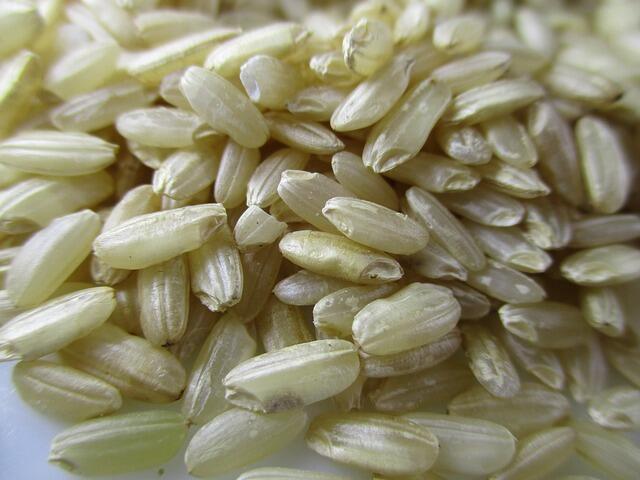Fiber composition in rice coproducts revealed in Illinois study

URBANA, Ill. – Rice coproducts in pig diets add fat and fiber, but too much fiber can decrease energy absorption and digestibility. A recent study from the University of Illinois characterizes the chemical composition of fiber in rice and rice coproducts, which could lead to diet interventions for improved digestibility.
“Because of rice fiber’s low fermentability, there’s a high upside potential for increased digestibility if we can find specific enzymes that can help degrade those fibers. For pigs, the most important thing is to be able to get more energy out of each ingredient,” says Hans Stein, professor in the Department of Animal Sciences and the Division of Nutritional Sciences at U of I, and co-author of the study published in Animal Feed Science and Technology.
A former doctoral researcher working with Stein, Gloria Casas, analyzed the carbohydrate composition of several ingredients – brown rice, broken rice, full-fat rice bran, defatted rice bran, and rice mill feed – in a laboratory in Denmark. She also evaluated the digestibility of each ingredient by simulating the environments of the pig stomach, small intestine, and large intestine, including fermentability by gut microbes.
The ingredients varied widely in starch, cellulose, lignin, and fiber content, among other specific carbohydrate fractions, but for all ingredients, the primary carbohydrates were arabinoxylans.
“Arabinoxylans are relatively complex fibers that consist primarily of two sugars, arabinose and xylose, though there are many others in there, too,” Stein says. “That is true for all the rice coproducts, but the ratio between arabinose and xylose differs among the ingredients. That ratio, to some degree, influences the functionality of the fibers.”
Simulated (in vitro) digestibility was higher in brown rice and broken rice than for all other coproducts, which Stein and Casas expected, given that full-fat rice bran, defatted rice bran, and rice mill feed were much higher in insoluble fibers. The results confirm earlier digestibility studies the researchers completed with the same ingredients in pigs.
Stein notes the results don’t just apply to pigs.
“Humans consume rice and rice bran all over the world. Knowing the specific fiber composition of these products will allow us to figure out which gut microbes are affected,” he says. “In humans, one of the major problems in terms of nutrition in our part of the world is that we don’t get enough fiber. If we consume these fibers, how will they affect our gut microbes?”
The article, “Arabinoxylan is the main polysaccharide in fiber from rice coproducts, and increased concentration of fiber decreases in vitro digestibility of dry matter,” is published in Animal Feed Science and Technology [DOI: 10.1016/j.anifeedsci.2018.11.017]. Authors include Gloria Casas, Helle Lærke, Knud Bach Knudsen, and Hans Stein. The work was supported by the Office of International Programs in the College of Agricultural, Consumer and Environmental Sciences at U of I, and the Bill and Mary Lee Dimond Fund.